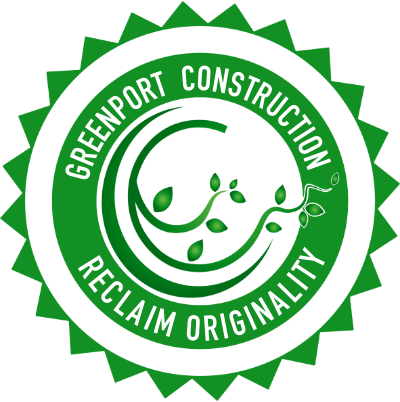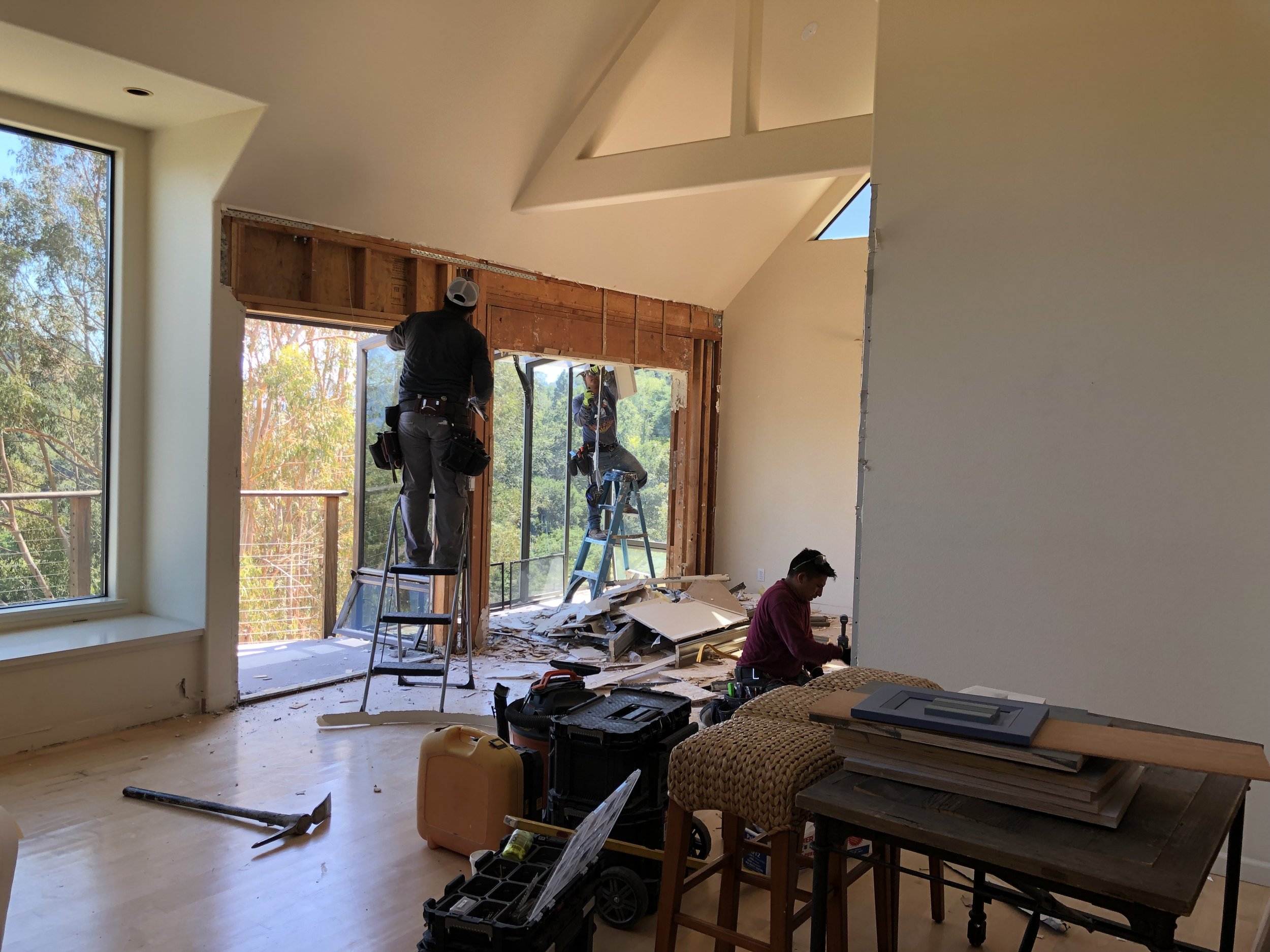Home Construction grants, programs & incentives
Home renovations are an excellent way to improve the value, functionality, and comfort of your property. However, they can also be expensive. The good news for homeowners in California is that there are various grants and incentives available to help offset renovation costs—especially if you’re focusing on energy efficiency, sustainability, or accessibility improvements. In this blog post, we’ll walk you through some of the most significant opportunities for saving money on your next home renovation project in California. If you’re considering a renovation project and need help navigating the available incentives, feel free to reach out. We’re here to assist you every step of the way!
The Clean HEET Program
The Clean HEET Program was developed by the Air District to reduce wintertime wood smoke pollution and improve air quality by incentivizing Bay Area homeowners to replace their existing, operational, freestanding wood stoves or wood-burning fireplace inserts with electric heat pumps.
Up to $2 million in funding is available for the Clean HEET Program. Individual awards range from $3,000 - $10,500 for one stove/insert and $6,000 - $13,500 for two stoves/inserts. All Bay Area homeowners are eligible to apply. The program does not provide reimbursement for work already performed. The funding for this project is renewed at the beginning of each year and does max out quickly.
BASIC RULES:
Only existing wood stoves or wood-burning fireplace inserts are eligible.
Device must be indoor, operational, manufactured before 2020, and burn wood for heating purposes. No open-hearth fireplaces or cooking appliances.
Only electric heat pumps qualify as replacement devices.
No electric/gas fireplaces, air conditioners, portable devices, or electric/gas furnaces.Applicants must receive written approval from the Air District prior to starting their projects.
California Energy Upgrade Program: Rebates for Energy-Efficient Home Improvements
Overview:
Energy Upgrade California offers a variety of incentives and rebates for homeowners making energy-efficient upgrades. This program is designed to help homeowners reduce energy use and lower utility bills through energy-efficient home improvements.
Eligible Improvements Include:
Insulation (attic, walls, floors)
High-efficiency windows and doors
Heating, ventilation, and air conditioning (HVAC) upgrades
Duct sealing
Solar panel installations
Energy-efficient lighting
Incentives:
Rebates for qualifying energy efficiency improvements (e.g., up to $3,500 or more depending on the project).
Some incentives may vary based on income levels, and certain improvements could provide additional funding through local utility programs.
How to Apply:
Homeowners must work with a certified contractor who can guide them through the rebate process and ensure the work meets program standards.
Visit Energy Upgrade California to check eligibility and explore specific rebate offers available in your area.
Property Assessed Clean Energy (PACE) Financing
Overview:
PACE is a unique program that allows homeowners to finance energy-efficient home improvements and pay for them through their property taxes over 5-20 years. This program can be used for a wide range of eligible upgrades, including solar panel installation, energy-efficient windows, HVAC systems, water-efficient devices, and more.
Eligible Improvements Include:
Solar panel installations
Energy-efficient heating, cooling, and insulation
Water conservation improvements (e.g., drought-resistant landscaping)
Electric vehicle charging stations
Benefits:
No upfront costs—financed through property taxes.
Flexible repayment terms (up to 20 years).
Easy qualification, no credit check required.
Potential for increased home value due to energy-efficient upgrades.
How to Apply:
Homeowners apply for PACE financing through authorized program administrators, such as CaliforniaFirst, Ygrene, and Renew Financial.
Work with a participating contractor to ensure the upgrades qualify for financing.
Visit CaliforniaFirst or other PACE providers for more information.
Federal Tax Credits for Energy-Efficient Home Improvements
Overview:
In addition to California-specific programs, there are federal tax credits available for homeowners who make certain energy-efficient home improvements. These credits can significantly reduce the upfront costs of home renovations.
Eligible Improvements Include:
Solar Panels: 30% tax credit on installation costs for residential solar energy systems.
Energy-efficient Windows and Insulation: Up to 10% of the cost, or a set amount per item (e.g., $200 for windows).
Electric Vehicles (EV) Charging Stations: Tax credits for the installation of EV chargers.
How to Apply:
For solar panels and similar improvements, the tax credit can be claimed directly on your federal tax return.
Ensure you maintain documentation of all eligible expenses (invoices, receipts) and keep records of installation dates.
For more information, visit the Energy.gov tax credits page to review qualifications and submission guidelines.
The California Home Improvement Loan Program
Overview:
The California Home Improvement Loan Program (CHILP) offers low-interest loans to homeowners to make improvements such as energy efficiency upgrades, accessibility renovations, and essential repairs.
Eligible Improvements Include:
Energy-efficient home upgrades (e.g., windows, doors, insulation, solar energy)
Safety and accessibility modifications
Plumbing and electrical system repairs
Loan Features:
Low-interest loans.
Flexible repayment terms (usually up to 15 years).
Available for all homeowners, but income limits may apply for specific projects.
How to Apply:
Apply through the California Housing Finance Agency (CalHFA).
Homeowners may need to provide proof of income, the planned renovation project, and the contractor’s credentials.
Visit CalHFA Home Improvement for more details.
Local Grants and Incentives
Overview:
Many California cities and counties offer their own grants and incentives aimed at improving home safety, energy efficiency, and sustainability. These programs can vary by location, so it’s important to check with local governments or utilities for available options.
Examples of Local Incentives:
Earthquake Retrofit Grants (Cities like Los Angeles and San Francisco): Offers financial assistance to homeowners who are retrofitting their homes to resist seismic activity.
Fire Safety Grants (Wildfire-prone areas such as Napa and Sonoma counties): Programs that assist homeowners with fire-resistant home improvements, such as creating defensible space and installing fire-resistant materials.
Energy Efficiency Rebates (Southern California Edison, Pacific Gas & Electric, etc.): Local utility companies offer rebates for upgrading to energy-efficient appliances, insulation, or other energy-saving measures.
How to Apply:
Check with your city’s Department of Housing, local utility providers, or county government to find out which grants or rebates are available.
Programs may require you to meet certain conditions or work with pre-approved contractors to qualify.
Accessibility and ADA-Compliant Home Renovations
Overview:
Home modifications to meet Americans with Disabilities Act (ADA) standards can be costly, but there are grants and programs available for those needing accessibility improvements.
Examples of Grants:
Home Access Program (California Department of Housing and Community Development): Provides financial assistance to modify homes for accessibility, including ramps, stair lifts, and bathroom modifications.
Veteran Affairs Adaptive Housing Grants: For veterans who need home modifications for mobility and other accessibility improvements.
How to Apply:
For Home Access Program, you can apply through the California Department of Housing and Community Development (HCD). Visit their website for guidelines.
For Veterans Adaptive Housing Grants, visit the U.S. Department of Veterans Affairs website to apply for financial assistance.
How to Apply for Grants and Incentives in California
The application process for home renovation incentives can vary based on the program you’re interested in. In general, here’s how to get started:
Research Available Programs: Look into state, federal, and local programs to determine which ones you’re eligible for.
Hire a Qualified Contractor: Many of these programs require the use of certified contractors to ensure the work meets the standards for rebates or financing.
Submit Documentation: You’ll likely need to provide proof of income, homeownership, and a detailed description of the proposed renovations.
Schedule Inspections: Some programs, like energy efficiency rebates, may require an inspection before or after the renovation work is completed.
Claim Your Incentives: Once approved, you can claim your rebates, tax credits, or financing options.


